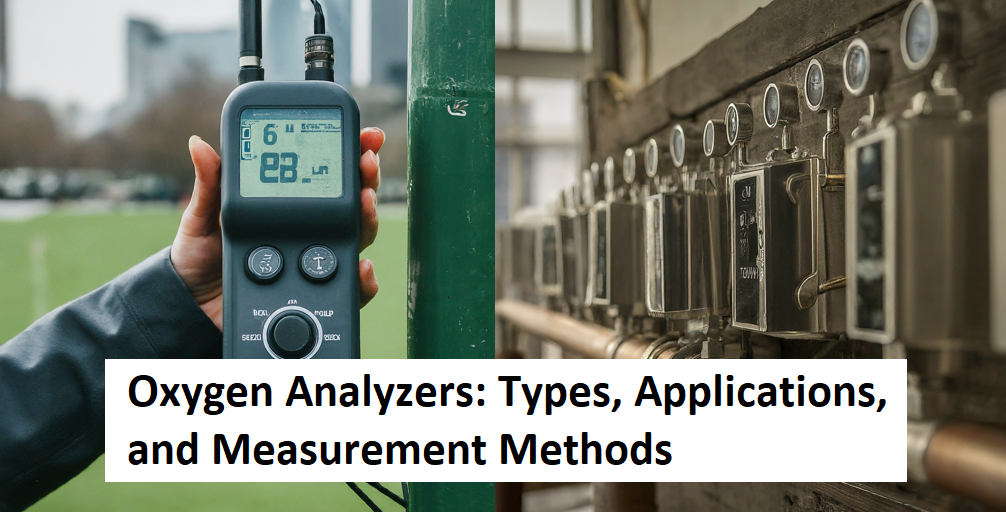Oxygen Analyzers: Types, Applications, and Measurement Methods – Discover the different types of oxygen analyzers, their essential applications in various industries, and the underlying measurement techniques. Learn about electrochemical, paramagnetic, magneto-optic, and infrared oxygen analyzers.
Oxygen Analyzers
Oxygen analyzers are essential instruments used in various industries to accurately measure the concentration of oxygen in gas mixtures. These devices play a crucial role in ensuring safety, process control, and environmental monitoring. This article will delve into the different types of oxygen analyzers, their applications, and the underlying measurement methods.
Types of Oxygen Analyzers
- Electrochemical Oxygen Analyzers:
- Zirconia Sensors: These sensors utilize solid-state zirconia to measure oxygen concentration. They are highly accurate and reliable, often used in industrial applications such as combustion control and environmental monitoring.
- Galvanic Sensors: Galvanic cells generate a current proportional to the oxygen concentration. They are typically used in portable oxygen analyzers and medical applications.
- Fuel Cell Sensors: Similar to galvanic sensors, fuel cell sensors produce a current based on the reaction of oxygen with a fuel. They offer high sensitivity and are suitable for applications requiring precise oxygen measurements.
- Paramagnetic Oxygen Analyzers:
- These analyzers exploit the paramagnetic property of oxygen, which is attracted to a magnetic field. The measurement is based on the change in magnetic susceptibility of the gas mixture. Paramagnetic oxygen analyzers are commonly used in industrial process control and scientific research.
- Magneto-Optic Oxygen Analyzers:
- Magneto-optic sensors utilize a combination of magnetic fields and light to measure oxygen concentration. They offer high accuracy and are suitable for applications requiring real-time oxygen monitoring.
- Infrared Oxygen Analyzers:
- Infrared sensors measure oxygen concentration based on the absorption of infrared radiation by oxygen molecules. They are particularly useful for applications involving high-temperature gases and combustion processes.
Applications of Oxygen Analyzers
Oxygen analyzers are indispensable in a wide range of industries, including:
- Healthcare: Monitoring oxygen levels in patient care settings, such as hospitals and clinics.
- Industrial Process Control: Ensuring safe and efficient operation of industrial processes, including combustion, fermentation, and chemical reactions.
- Environmental Monitoring: Assessing air quality and monitoring oxygen levels in various environments, such as wastewater treatment plants and industrial emissions.
- Scientific Research: Conducting experiments and studies that require precise oxygen measurements.
- Safety and Emergency Response: Detecting oxygen deficiencies in confined spaces and emergency situations.
Measurement Methods
Oxygen analyzers employ various measurement methods, each with its own advantages and limitations:
- Electrochemical: Based on the interaction between oxygen and a sensing element.
- Paramagnetic: Utilizing the magnetic properties of oxygen.
- Magneto-Optic: Combining magnetic fields and light to measure oxygen concentration.
- Infrared: Measuring the absorption of infrared radiation by oxygen.
The choice of measurement method depends on factors such as the required accuracy, range, response time, and operating environment.
In conclusion, oxygen analyzers are essential tools for measuring oxygen concentration in various applications. By understanding the different types of oxygen analyzers, their applications, and measurement methods, individuals can select the most suitable instrument for their specific needs.
